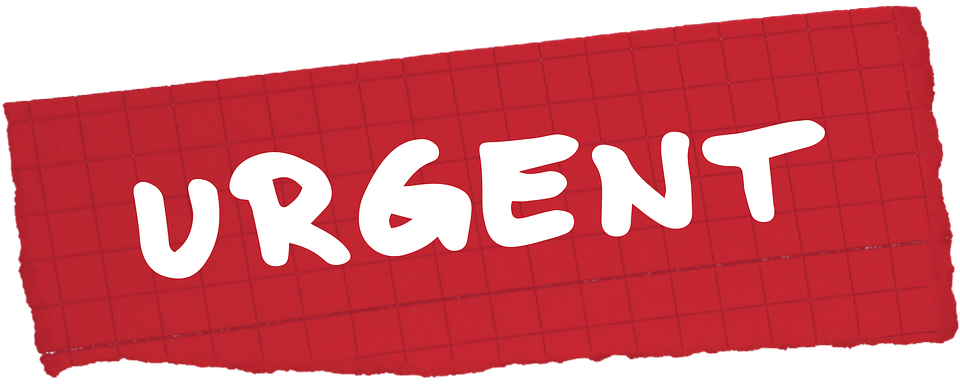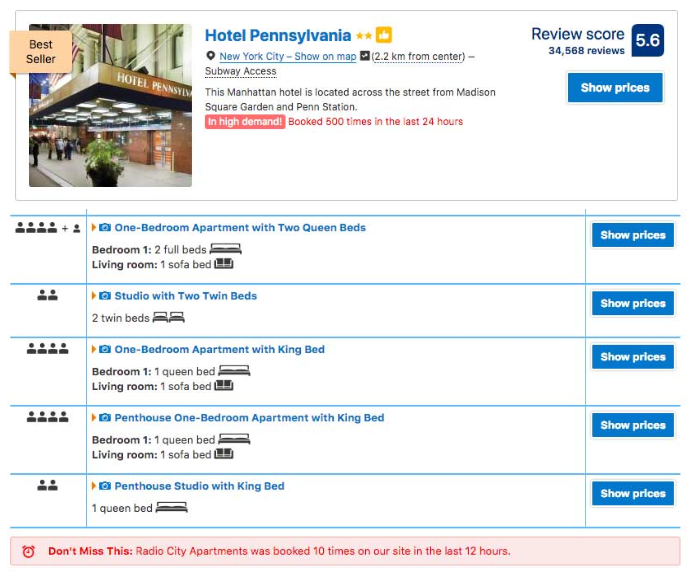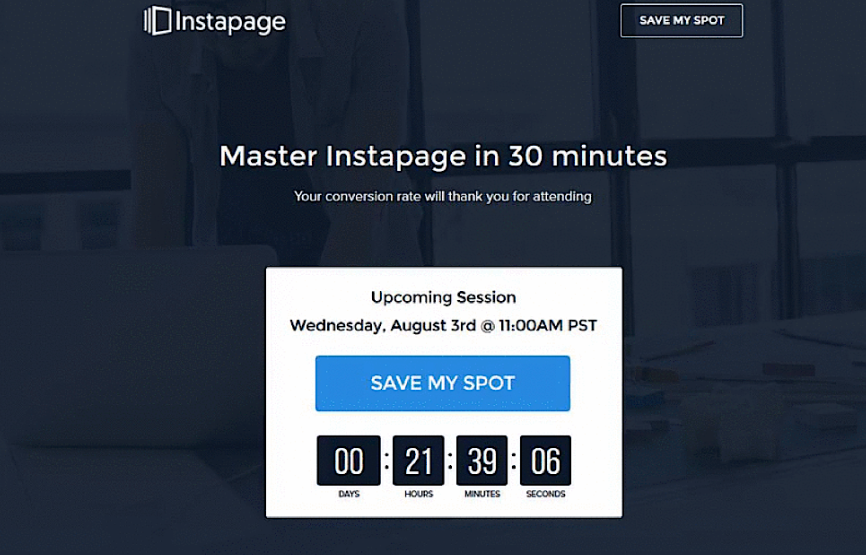Scarcity and Urgency: Powerful Form Design Tools

When a user completes a lead capture or contact form, they do so because they think it will lead to some kind of value. The type of value depends on the form. It could be a product, service, or information. But ultimately they have to think they’ll get something valuable from the interaction.
In order to compel people complete your forms, therefore, it’s your job to raise the value of whatever you’re offering as much as possible. If users believe your offer is undeniably valuable, they’ll rush to submit your forms.
To compel people complete your forms, it’s your job to raise the value of whatever you’re offering as much as possible.
We’ve talked about building forms that maximize conversions and avoiding common form conversion mistakes, but in this article we’d like to move beyond button colors, placeholder text, and form layouts. We want to talk about two psychological principles – scarcity and urgency – you can use to raise the value of your offerings and drive your users and customers to complete your forms.
Scarcity and Urgency Explained
Scarcity and urgency are similar psychological conditions you can use to compel your users to take action. If you use them intelligently, you can change your users’ and customers’ behavior to make them act right away on what’s important (urgency) to obtain what’s limited (scarcity).
Urgency
Urgency is when you make the prospect or lead feel like they have to act quickly to receive a certain benefit. They need to feel like they will suffer the longer they go without the benefit, or that they might miss their opportunity entirely.
Importance is a key element here. Something can’t be urgent if it isn’t important. No amount of urgency will make someone opt in or buy if they don’t find the benefit valuable.
A classic example is parents with a crying baby. When a baby starts crying, parents feel a sense of urgency to make it stop. The longer they wait, the longer they (and others) will deal with the sound of an upset baby. They might be persuaded to buy something to make their baby happy.
Timing is another important element. Your prospect needs to be feeling their pain when you propose your solution, otherwise it’s not that important. Going back to our example: A baby who hasn’t cried yet isn’t an urgent problem, even if the parents know there’s a chance the baby may require soothing at some point.
Scarcity
Scarcity is a psychological trigger that uses quantity to compel people to act. It’s when your prospects or leads worry they won’t receive their benefit because it’s in short supply or somehow limited. It relies on the require soothing principle to compel people to take action.
In some cases, limitations on products or services act as social proof. People tend to place a higher value on things that are scarce. Ultimately, we think, “Well if everyone wants it, it must be great.”
In 1975, researchers tested scarcity by showing people two identical glass jars with cookies. One jar contained 10 cookies. The other jar only had two left. The cookies in the jars were exactly the same, but people rated the near-empty jar as more valuable. They even claimed the cookies in the near-empty jar looked tastier! This study proves that low supply increases demand.
You probably see lots of examples of scarcity every day:
- “Going out of business sale.”
- “Only ten course spots left.”
- “Clearance items only available for three days.”
- “While supplies last.”
Black Friday is the most obvious example of scarcity. Some people will wait for hours (or days) in the cold for a chance to grab a highly discounted item. Sometimes those crowds get violent!
Using Scarcity and Urgency with Your Forms
Now that you understand scarcity and urgency, let’s dive into tactics. How do you apply these psychological principles to your lead capture and contact forms?
1. Display Your Stock Limitations
If your stock or your ability to provide a service has a limit, it’s important to make that scarcity part of your marketing. Post those limitations near your lead capture and checkout forms so people know they might miss out if they don’t act quickly.
Check out some of the language on this Groupon form. “Limited quantities available” encourages you to act quickly before you miss out.

Scarcity isn’t limited to physical stock, however. You can limit the number of people who attend your webinar, meet you in person, or take your class. You can limit the number of coaching sessions you offer each month or the number of phone calls you take.
One of the nice parts about putting limits on services is that those limits can be well above what you expect. For instance, you might limit your video consultations to 20 per month, even though you typically only perform five. The existence of the limitation create the scarcity, regardless of whether you even come close to it.
2. Use the Right Words
The copy you use on your pages, near your forms, and even in your forms can influence how people feel about your offer and call to action. While single words rarely change someone’s mind and make them do something they ordinarily wouldn’t, the right words can push someone over the edge if they’re already inclined to take the next step.
Here are some words that inspire urgency:
- New
- Deadline
- Now
- Hurry
- Quick
- Limited
- Final
- Never again
- Instant
- Immediately
- Expires
- Running Out
- Fast
- Last Chance
“Now” is a particularly powerful urgency word, which is why you see it in a lot of call to action buttons.
Here are some phrases that help create scarcity:
- Lock in this price while you still can
- Be one of the few
- Only available for a limited time
- Registrations fill up fast
- 3 people are looking right now (good for reservation offers)
- Only 6 left in stock
- Spots fill up quickly
- Reply needed in 24 hours
- Limited time offer
- Valid only one day
Notice how Booking.com creates a sense of urgency on the page before you fill out their booking form. They use phrases like “In high demand,” and “Best seller,” and “Booked 500 times in the last 24 hours” to make it clear that these hotel rooms won’t be available forever.

3. Set Deadlines
Since time is a critical element of urgency, deadlines pressure your users and customers to take action. But it only works if you let them know when an opportunity will pass. Use this kind of phrasing near your forms to push them over the edge:
- “Registration closes on December 3rd.”
- “Orders must be placed before 5 PM on January 10th.”
- “Only accepting patients who sign up by March 1st.”
- “Sale ends in 24 hours.” (Ideally with a countdown timer.)
Notice how this offer tells you exactly how much longer you have to take advantage of it, implying that you better complete the form (below the offer) quickly. They also use “State: Almost Ended” to drive the point further.

This Instapage signup form uses deadlines well too. The timer counts down right in front of you, compelling you to click the call to action to bring up the form.

4. Avoid Fake Scarcity and Urgency
You can create urgency and scarcity in your marketing to some degree, but don’t get carried away. Customers and users can tell when you try to manipulate them with artificial scarcity and urgency that just don’t make sense.
For instance, it would seem reasonable to limit a membership course size because you want to make sure you have time for every student. But it wouldn’t make sense to limit the number of PDF eBooks you sell. Customers would realize right away that there’s no reason to limit a digital product.
Customers also get suspicious if you constantly have scarcity problems. If you release a new product every month and never seem to have enough, people will realize that you’re creating scarcity artificially.
Furthermore, don’t try to create urgency where there just isn’t any. If you try to hype up a problem that your users don’t think is that important, you’ll lose credibility with your audience. Think about those cheesy infomercials that try to convince you that minor annoyances – like spilling your bowl of chips or forgetting where you parked your car – are massive problems that require elaborate solutions.
Leverage These Principles
By integrating the principles of urgency and scarcity into your lead capture and contact forms (and the pages where your forms appear), you can raise the perceived value of your offerings so users feel compelled to complete your forms. Use the tips we outlined above in your pages and forms to leverage scarcity and urgency.
